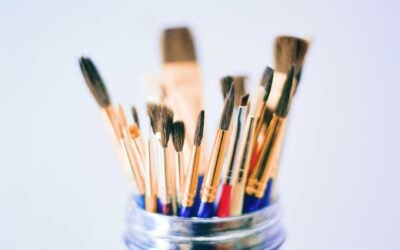Art has the incredible ability to transcend boundaries and touch the deepest parts of our souls. It has the power to heal, inspire, and transform lives, even in the most challenging circumstances. One such circumstance is being in prison, where individuals often find themselves in a dark and isolated environment. However, through the power of art, these individuals can experience a glimmer of hope and find a sense of purpose.
When someone is going through a difficult time, such as being in prison, their emotional and mental well-being can suffer greatly. The experience of confinement, separation from loved ones, and the loss of freedom can take a toll on their overall outlook on life. However, art can serve as a lifeline, providing a means of expression, self-reflection, and personal growth.
Art allows individuals to transform their thoughts and emotions into something tangible. It gives them a voice when they feel silenced and invisible. Through various art forms such as painting, drawing, writing, or music, prisoners can explore their innermost feelings, fears, and hopes. They can channel their frustrations and experiences into their creations, creating a therapeutic outlet.
One of the most powerful aspects of art is its ability to foster a sense of connection and community. In prison, where isolation is prevalent, art can bring people together, creating a supportive and inclusive environment. Art workshops and programs provide prisoners with the opportunity to collaborate, share ideas, and learn from one another. It creates a space where individuals can feel understood, respected, and valued.
The transformative power of art extends beyond the confines of the prison walls. Art has the capacity to challenge societal perceptions and stereotypes, providing a platform for prisoners to share their stories and experiences. Through exhibitions, performances, and publications, the artwork created by prisoners can challenge preconceived notions and shed light on the human potential for growth and change.
Art also plays a crucial role in the rehabilitation process. It encourages prisoners to develop new skills, explore their creativity, and make positive choices. The act of creating art requires discipline, focus, and perseverance, qualities that can be transferred to other areas of their lives. It helps prisoners develop a sense of responsibility, self-confidence, and a belief in their ability to change.
The impact of art on the lives of prisoners is immeasurable. It offers hope, empowerment, and a renewed sense of purpose. It allows individuals to see beyond their current circumstances and envision a brighter future. Art can break the cycle of negativity and provide a pathway to personal growth and transformation.
In conclusion, art has the remarkable ability to change lives, even in the most challenging of times. For those in prison, art can provide a lifeline, allowing them to express themselves, connect with others, challenge stereotypes, and embark on a journey of self-discovery. It is a powerful force that can bring light to the darkest corners of our existence and pave the way for healing and transformation.



0 Comments